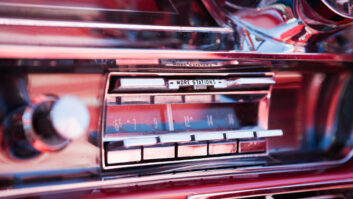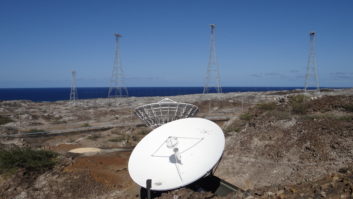CAR NOISE
Concerning poor car antennas and car computer noise:
One exception is the Prius. The Prius does have just a small antenna that does triple duty for AM/FM/Sirius, but the AM reception is so clean, that I can (and do) use the AM radio in my Prius to listen to fringe and DX on AM, as I have in all three Prius cars that I have owned.
So I wonder just what the engineers at Toyota are doing so well in what “should” be one of the noisiest cars with all of those hybrid circuits, but isn’t! And why the other car manufacturers can’t supply a good AM experience.
William Pietschman, R.N. (W8LV)
Circleville, Ohio
USER EXPERIENCE
Responding to “Website Development 101” (RW March 2, 2016):
A few website comments as a user:
Keep text contrast high. Don’t use gray text. It looks like my printer ran out of ink and is hard to read.
Don’t bury your content with a pop-up ad. This generally causes me to immediately close the tab and go elsewhere. Relevant static ads beside the content are fine.
Don’t autostart audio or video. Another great reason to close the page immediately and never come back.
Use HTML5 audio and video so no plug-ins are required and the content can be viewed on a variety of platforms.
For broadcast stations, make it easy to find your schedule and frequencies. I’m amazed that a local TV station does not have a link to their schedule on their home page.
Avoid clutter. Though this is not print, graphic designers for print have done a great job making pleasing pages through use of white space, organization, easy-to-read text, etc.
Harold Hallikainen
Engineer
Arvada, Colo.

LOCAL RADIO SUCCESS
Radio as it should be! Your article on WATD Radio in the Jan. 4 issue (“WATD(FM): Live, Local and Relevant for 39 Years”) was a game plan for success for any small town station … and I should know.
Except for the location and call letters, it could have been the station in which I was the principal stockholder for over 25 years — WKUL(FM) in Cullman, Ala. I sold my interest six years ago and they are still “live and local” — and successful.
Don Mosley
Sound of Birmingham
Birmingham, Ala.
LOUDNESS WARS
Having been involved in radio and television audio in the U.S. for over 40 years, and often a reluctant soldier in the loudness wars, I was naturally drawn to Jon Schorah’s article on normalizing radio audio (radioworld.com, keyword “Schorah”).
The loudness objectives of radio and TV are actually quite different.
Radio program directors have always been keen to have their station “pop” on the dial, and radio sales managers expect to have the commercial content as loud as possible. Therefore, the processing objective has typically been to maximize the loudness of all programming as a real or imagined competitive necessity. Over the years, the sophistication of radio processing has reached a very high level and amazingly clean and loud audio can be produced.
TV is a whole different story. Normal program audio ranges from single voice dialog most of the time to wide dynamic range for drama, particularly that originally produced for the movies. In between and there is a relatively small amount of music programming. For decades, it was a given that the commercials would be at maximum normal VU levels, and everything else went down the line the same way it, all subject to the station and/or network compression for leveling etc.
With the advent of stereo TV audio and increased dynamic range of typical program content, normalizing everything to uniform VU levels resulted in increasing viewer complaints about loud commercials, hence the eventual shift to the CALM ACT and real loudness standards. In 2013, I wrote two articles for Broadcast Engineering covering various aspects of this transition period. Although there are odd cases of level problems and the FCC still gets occasional complaints, the TV loudness problems are mostly solved.
Radio has a different set of objectives and selection-to-selection loudness matching is not one of them.
First of all, with radio formats in the US, all the selections in playlist are of similar dynamics. Also most stations are playing recorded playlists on automation systems and tracks are leveled in production. As for station-to-station loudness, it’s simply not a problem. We’re down to the last dB of possible loudness enhancement, and the loudness wars are waning.
The introduction of digital has created two new challenges: time matching the analog and HD1 digital signals and optimizing audio processing for each output. Since the main analog signal is the fallback for the HD1 digital, it should ideally sound as close to the digital audio as possible, but that’s often not a practical goal because of the analog’s need for competitive processing. With today’s relatively low digital penetration, the analog processing requirement are still king. The sophistication of radio audio processing has taken another step forward with designs that handle both the analog and digital so each processing section can know what the other is doing.
With all of the challenges facing radio engineers in the US, I doubt that there is much enthusiasm for normalizing audio levels. The programmers want the music loud, the sales managers and station managers want the commercials lou, and the stations aren’t getting listener complaints about levels.
Dennis R. Ciapura
President
Performance Broadcasting
Helena, Mont.









